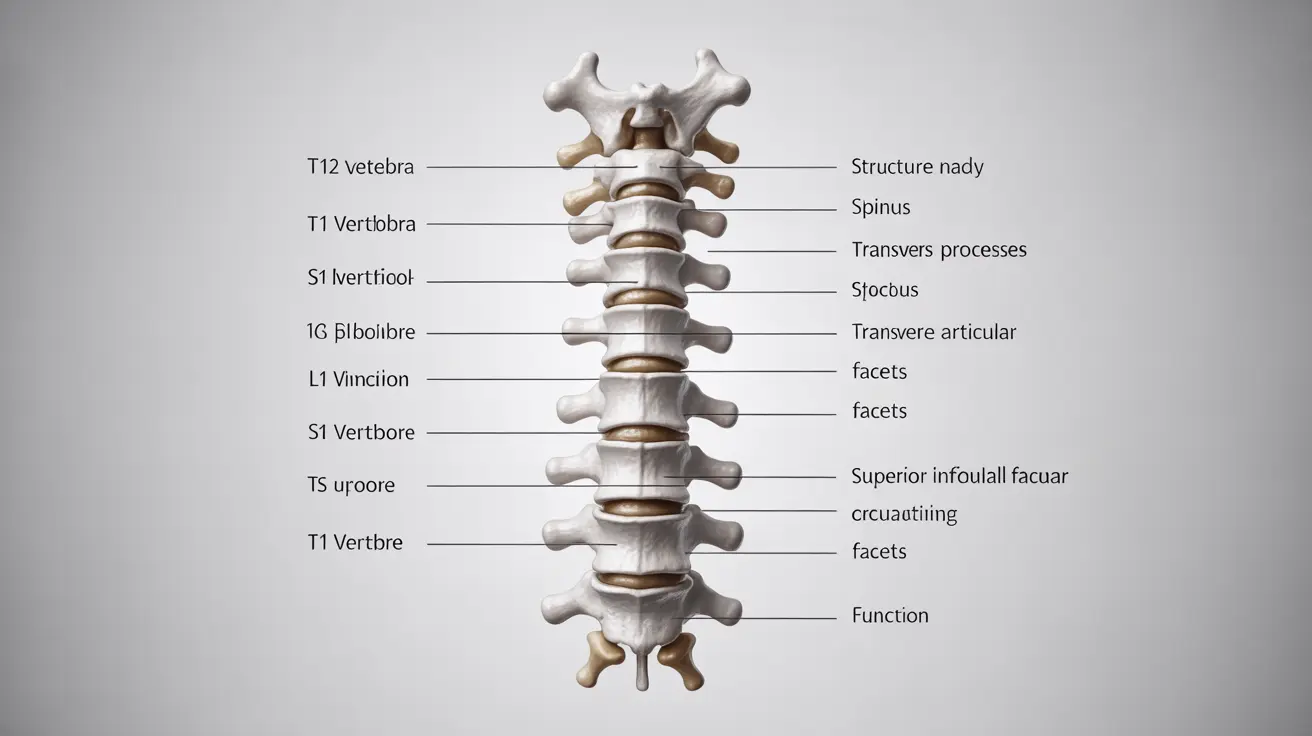The T12 vertebra plays a crucial role in your spinal health and overall body function. As the final vertebra in the thoracic spine, it serves as an important transition point between your middle and lower back. Understanding its location, function, and potential health concerns can help you better manage your spinal health and recognize when medical attention might be needed.
Anatomy and Location of the T12 Vertebra
The T12 vertebra is positioned at the bottom of your thoracic spine, sitting between T11 above it and L1 (the first lumbar vertebra) below. You can typically locate it by finding the bottom of your rib cage, as T12 is the last vertebra that connects to your ribs. This strategic position makes it a vital component of your spine's structure and functionality.
Unique Structural Features
The T12 vertebra has several distinctive characteristics that set it apart from other thoracic vertebrae. It features a larger vertebral body to help support more weight and transitions in size and shape to match the lumbar vertebrae below. This unique design allows it to facilitate movement while maintaining stability in this crucial spinal region.
Functions and Importance
The T12 vertebra serves multiple essential functions in your body's mechanical and neurological systems. It helps protect the spinal cord, supports upper body weight, and provides attachment points for important muscles and ligaments. Additionally, the nerve roots at this level contribute to sensation and muscle control in the lower abdomen and legs.
Neurological Significance
- Lower abdominal muscle function
- Sensation in parts of the hip region
- Aspects of bladder control
- Muscle coordination in the lower body
Common T12-Related Conditions
- Compression fractures
- Herniated discs
- Degenerative disc disease
- Spinal stenosis
- Nerve root compression
Prevention and Maintenance
- Maintaining good posture
- Regular exercise focusing on core strength
- Proper lifting techniques
- Weight management
- Avoiding prolonged periods of sitting
Frequently Asked Questions
Where is the T12 vertebra located in the spine, and how can I identify it? The T12 vertebra is located at the bottom of your thoracic spine, where your lowest ribs attach to your spine. You can identify it by finding the bottom of your rib cage, as it's the last vertebra with rib attachments.
What problems or symptoms could occur if my T12 vertebra is injured or compressed? Injury or compression of the T12 vertebra can cause lower back pain, numbness or tingling in the legs, weakness in the lower body, and potentially affect bladder control. Severe injuries may lead to more serious neurological symptoms.
How does the T12 vertebra differ from other vertebrae in the back? The T12 vertebra is larger than other thoracic vertebrae and has unique structural features that help it transition between the thoracic and lumbar spine. It's the last vertebra to connect with the rib cage.
What structures or functions does the T12 vertebra help support or control in the body? The T12 vertebra helps support upper body weight, protects the spinal cord, and provides attachment points for muscles and ligaments. Its nerve roots control lower abdominal muscles, sensation in the hips, and aspects of bladder function.
What precautions or treatments are recommended for pain or injury involving the T12 vertebra? Treatment options may include physical therapy, pain management, proper posture maintenance, and in some cases, surgical intervention. Precautions include avoiding heavy lifting, maintaining good posture, and following medical professional guidance for specific conditions.




